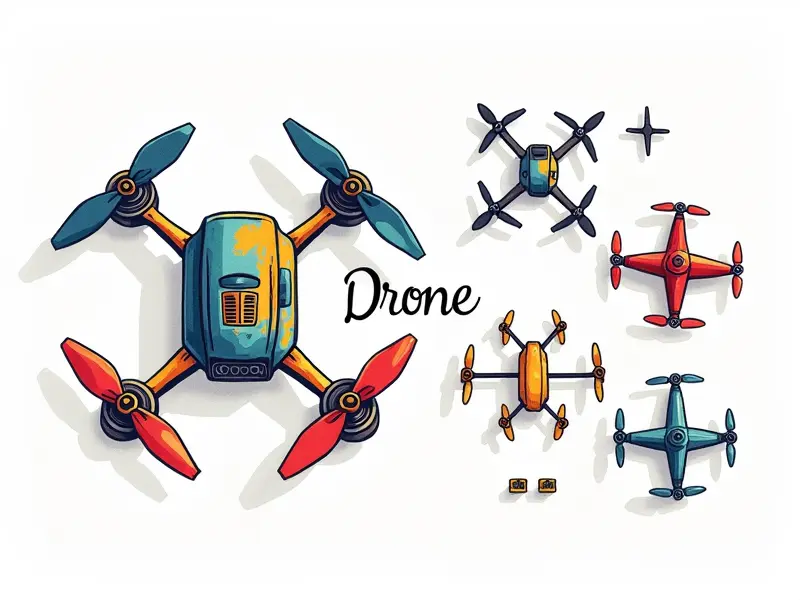How to calibrate GPS on drone?

How to Calibrate Drone GPS Quickly
Calibrating your drone's GPS is essential for ensuring accurate navigation and stable flight performance. A well-calibrated GPS system helps the drone maintain its position, follow waypoints accurately, and avoid obstacles effectively. This article will guide you through the process of calibrating your drone’s GPS quickly and efficiently.
Step-by-Step Guide: Calibrating Drone GPS
To ensure optimal performance from your drone's GPS system, follow these detailed steps:
- Charge Your Battery: Start by ensuring that the drone battery is fully charged. A low battery can affect calibration accuracy.
- Select a Suitable Location: Choose an open area with minimal interference from tall buildings or dense foliage. Ensure there are no obstructions within at least 10 meters of your drone.
- Power On the Drone: Turn on your drone and wait for it to initialize all systems, including GPS.
- Access Calibration Menu: Navigate through the drone's control interface to find the calibration settings. This is usually under a menu labeled "Setup" or "Calibration."
- Initiate GPS Lock: Follow the on-screen instructions to initiate the GPS lock process. The drone will search for satellite signals and establish a connection.
- Wait for Signal Acquisition: Allow the drone sufficient time to acquire GPS signals from multiple satellites. This can take several minutes depending on environmental conditions.
- Verify Accuracy: Once the GPS lock is achieved, verify that the displayed position matches your actual location as closely as possible.
Mastering GPS Calibration on Your Drone
Mastery of GPS calibration involves understanding and addressing common issues. Here are some tips to help you achieve a perfect calibration:
- Avoid Interference: Keep your drone away from sources of electromagnetic interference such as mobile phones, Wi-Fi routers, or other electronic devices.
- Use High-Quality Batteries: Ensure that the batteries you use are high-quality and fully charged to prevent any performance issues during calibration.
- Check Firmware Updates: Regularly check for firmware updates from your drone manufacturer. These updates often include improvements in GPS functionality.
Easy Tips for Perfect Drone GPS Setup
A perfectly set up GPS system ensures smooth and reliable flights. Here are some straightforward tips to achieve this:
- Select a Flat Surface: Place your drone on a flat, stable surface before starting the calibration process.
- Clear Weather Conditions: Opt for clear weather conditions with minimal cloud cover and no heavy rain or snowfall.
- Use High-Resolution Maps: Ensure that your ground control station uses high-resolution maps to provide accurate location data.
Optimize Your Drone's GPS Performance Now
To optimize the performance of your drone’s GPS system, consider these recommendations:
- Regular Maintenance: Perform regular maintenance checks on your drone’s hardware to ensure all components are functioning correctly.
- Monitor Signal Strength: Keep an eye on the signal strength during calibration. Weak signals can lead to inaccurate positioning.
- Leverage Advanced Features: Utilize advanced features such as dual-frequency GPS or RTK (Real-Time Kinematic) technology for enhanced accuracy.
Why and How to Calibrate Drone GPS
The primary reasons for calibrating your drone’s GPS are to ensure accurate positioning, stable flight performance, and efficient navigation. Here's how you can achieve this:
- Precision Navigation: Accurate GPS calibration ensures that the drone follows predefined routes precisely.
- Safety Enhancements: A well-calibrated system reduces the risk of collisions with obstacles and other aircraft.
- Battery Efficiency: Properly calibrated GPS helps in conserving battery power by optimizing flight paths.
The Importance of GPS Calibration in Drones
Calibrating your drone’s GPS is crucial for several reasons:
- Avoid Position Drift: Regular calibration prevents the accumulation of errors that can cause position drift over time.
- Enhanced Autonomy: A calibrated GPS system enables autonomous flight modes to operate more reliably and safely.
- Data Integrity: Accurate positioning data is essential for collecting high-quality aerial imagery or surveying data.
Achieving Accurate GPS Lock on Your Drone
To achieve an accurate GPS lock, follow these best practices:
- Initial Setup: Perform the initial setup in a location with clear visibility to multiple satellites.
- Regular Updates: Keep your drone's software and firmware updated for optimal performance.
- Environmental Factors: Be mindful of environmental factors such as magnetic fields or tall structures that can interfere with GPS signals.
The Fastest Way to Calibrate Drone GPS Today
To calibrate your drone’s GPS quickly and effectively, follow these streamlined steps:
- Quick Initialization: Use a fast initialization mode if available in the firmware. This can significantly reduce calibration time.
- Optimized Locations: Choose locations with minimal interference for faster signal acquisition.
- Pre-flight Checks: Conduct pre-flight checks to ensure all systems are ready before starting the GPS calibration process.
Maximize Flight Stability: Calibrate Your Drone GPS
A stable flight is crucial for safe and efficient drone operations. Here’s how you can maximize stability through proper GPS calibration:
- Consistent Calibration: Perform regular calibrations to maintain consistent performance.
- Advanced Settings: Utilize advanced settings such as differential GPS (DGPS) or RTK for enhanced accuracy and stability.
- Pilot Training: Ensure that pilots are trained in proper calibration procedures to avoid common pitfalls.
Simplified GPS Calibration Process
The simplified process of calibrating your drone’s GPS involves these key steps:
- Preparation: Prepare the drone by ensuring it is fully charged and in a suitable location for calibration.
- Initialization: Start the initialization process through the control interface, following on-screen instructions carefully.
- Verification: Once GPS lock is achieved, verify accuracy by comparing displayed position with known coordinates.
Conclusion
Calibrating your drone’s GPS is a critical step in ensuring accurate positioning and stable flight performance. By following the recommended procedures and best practices outlined above, you can maximize the efficiency and reliability of your drone operations. Regular maintenance and updates are also essential to maintain optimal performance over time.

